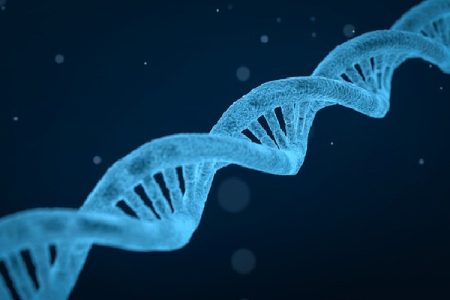
What is Down Syndrome: Facts and Definition
Down’s syndrome is a chromosome linked genetic condition that affects the development of the brain and the body. The condition leads to a loss of learning or intellectual disability, deterioration in certain physical characteristics, muscle tone weakness or hypotonia in children, etc.
People suffering from Down syndrome are born with an extra chromosome. This extra copy of chromosome 21 results in a total of 47 chromosomes, instead to 46 chromosomes. Presence of an extra chromosome leads to some mental and physical problems such as developmental disability or cognitive delays. Children born with Down’s syndrome suffer from some common physical problems such as an upward slant to the eyes, short stature, low muscle tone, etc. Read about Down syndrome eyes.
Down syndrome also leads to severe complications in children such as heart defects, digestive abnormalities, thyroid-related issues, hearing, speech and vision-related problems, etc. Sometimes, Down’s syndrome is also linked to Alzheimer’s disease, autism, behavioral issues, obsessive/compulsive behavior, etc.
Down’s syndrome is named after John Langdon Down, an English Physician. In the year 1866, he explained this genetic condition for the first time and he is known as the “Father of Down Syndrome”. After him, in 1959, Jérôme Lejeune (a French physician) observed 47 chromosomes in the cells and characterized Down syndrome as a chromosomal condition.
It was estimated by the Centers for Disease Control and Prevention that about one in every 650-750 infants is born with Down syndrome, in the United States. More than 200,000 individuals in the United States are known to have Down syndrome.
Types of Down syndrome
There are 3 main types of Down syndrome:
Trisomy 21
Trisomy 21 is the most common form of Down syndrome. It is found in almost about 95% of all the cases and usually occurs due to an error in cell division (called “nondisjunction”). This error in cell division occurs in an embryo which comprises of three copies of chromosome 21, instead of the normal two copies. This indicates that in Down syndrome, there’s an extra copy of chromosome 21 present in every cell. Trisomy of chromosome 21 is an outcome of failure of separation of the extra chromosome during or prior to conception. Therefore, when the embryo develops, this extra chromosome is replicated in every cell which results in an abnormality.
Translocation
This type of Down’s syndrome is found in almost 4% of the affected people and is characterized by the presence of a part of chromosome 21 attached to another chromosome (usually to chromosome 14) before or during conception. However, in this condition, the total number of chromosomes in the cells remains the same i.e 46.
Mosaic Down syndrome
Mosaic Down Syndrome is the least common form of Down’s syndrome as it is found in only 1% of the total population. In this condition, a child might have a mix of two types of cells i.e. he is born with only some cells that have an extra copy of chromosome 21. This mix of normal and abnormal cells is a result of abnormal cell division after fertilization. This syndrome is also known as Mosaicism and people suffering from this condition tend to show very fewer characteristics or symptoms of Down syndrome.
What causes Down syndrome?
Down syndrome definition clearly states that it is a genetic condition involving an abnormality in the chromosome number. In most cases, Down syndrome is not inherited but the risk of having a child with Down syndrome is extremely high in people with a family history of the condition or people who carry the genetic translocation (about only 4% people have translocation). It is also observed that Down’s syndrome is age-related as 80% of children born with Down’s syndrome are born to women of age 35 or older and to men who are of age 40 or above.
In Down’s syndrome, an “extra-critical portion” of chromosome 21 is present in all or some of the cells. This small and extra portion develops when an egg is fertilized by the sperm or during conception but the cause of formation of this portion is unknown. There are various studies going on to detect whether or not Down’s syndrome is a result of some environmental factors or any parental activity before or during pregnancy.
Signs and symptoms of Down syndrome
Each person with Down syndrome has different symptoms, which may vary from mild to moderate. Some common signs of Down’s syndrome are:
- flat face
- neck is comparatively shorter than normal
- issues with both short-term as well as long term memory
- size of head is smaller
- ears are of unusual shape or are smaller in size
- eyelids slanting upward (palpebral fissures)
- protruding tongue
- single crease in the palm with broad and short hands
- small-sized hands and feet with relatively shorter fingers
- low muscle tone
- high flexibility in joints
- short height
- lack of intellectual disabilities
- presence of small white spots on the iris of the eye called Brushfield’s spots
- delayed speech
People suffering from Down’s syndrome might also suffer from impulsive behavior, lack of attention, delay in fine motor skills, bowleggedness, etc. Down syndrome complications can also be counted as its symptoms. These can include heart defects, cataract (clouded eyes), hip dislocations, leukemia, thyroid problems, interrupted breathing during sleep, dementia, epilepsy, etc.
How is Down syndrome diagnosed?
Many screening tests are used for diagnosing children with Down syndrome. Due to the unique characteristics of Down syndrome, physical examinations can be easily used to determine if the baby has Down syndrome or not.
If any of the parents is a carrier, there are various screening procedures which are used to diagnose Down’s syndrome in a baby before birth i.e. during pregnancy. These tests are recommended depending upon which trimester the mother is in. Some of these tests are:
- In the first trimester, blood tests and ultrasound is recommended. The results may not be accurate in early pregnancy therefore, the child is again tested.
- In the second trimester, an ultrasound with quadruple marker screen (QMS) test helps to identify Down syndrome in infants and other defects in the brain and spinal cord. Quad screen test helps to measure the level of four pregnancy-associated substances in blood: alpha fetoprotein, estriol, HCG and inhibin A. Other tests to diagnose Down syndrome are chorionic villus sampling (CVS), amniocentesis, percutaneous umbilical blood sampling (PUBS, or cordocentesis), etc.
The diagnosis of Down syndrome with the help of fetal ultrasound during pregnancy is not much accurate as in most of the cases the babies with and without Down syndrome appear similar. A chromosomal analysis performed on amniotic fluid, blood or placenta provides more accurate results than an ultrasound.
What is the treatment for Down syndrome?
There is no known cure for Down syndrome. Researchers are still working to find Down syndrome cures and treatments. Each child with Down’s syndrome might require a different treatment plan depending upon the visible symptoms and complications. Early intervention of Down syndrome helps to improve the condition by enhancing the physical and mental growth of the patient. Several other medical conditions associated with Down syndrome are evaluated and treated separately.






